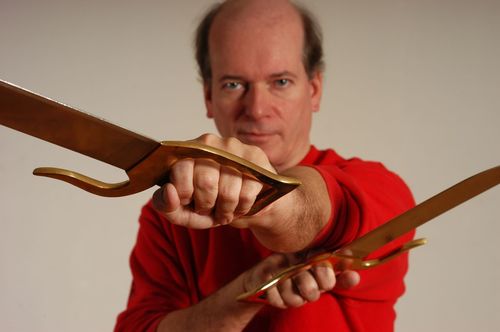MUK YAN CHONG
Wing Tsun's "Training partner" form is probably developed alongside with the Siu Nim Tau Form, in order to train the basic positions during rotation and with a proper power line via the 7 joints.
Muk Yan Chong contains of eight sections describing "triangle to square", various combinations of punching/controlling (Dar/Wu) "squared" sets of arms as and the Fook/Wu - Jam/Chaan, various kicking ideas, different "weapon ranges" etc.
The Wooden Dummy tests the primarily structure and coordination of arms and legs during limited rotation.
SIU NIM TAU
Wing Tsun's "Formula chart" is probably developed alongside with the Muk Yan Chong Form, to illustrate the anatomic correct positions to be structure tested at the Wooden Dummy.
Siu Nim Tau contains eight sections describing the 7 joint structure, Inside-/outside-/Diagonal- positions as Fook/Chaan punches and Jam/Taan/Wu controls,
including the basic structure rules necessary for the execution etc.
To understand the Siu Nim Tau message you must "empty the cup" to get "a little idea" about the simplicity in the human anatomy, rather than the complexity in a traditional fighting system.
Siu Nim Tau trains and tests especially the importance of the elbow joint.
CHUM KIU
Wing tsun's "Rotation/Kicking" form with full movements/rotaions is probably developed to avoid/preempt possible bad habbits, as out/inside over/under rotations, lack of Horizontality etc.
Chum Kiu contains of nine sections describing various combinations of punching/controlling (Dar/Wu) sets of arms, Inside/Outside Superstring combinations, the Basic kicks etc.
The Chum Kiu idea is "searching for the bridge" DAR - establishing a punching line, And "Sinking the bridge" WU - avoiding the opponent to do the same by controlling his frontality by "squared" arm positions.
Chum Kiu primarily trains/tests/tricks the frontality and "no leaning back" during rotation and when kicking.
BIU JEE
Wing tsun's "Explosive/Extreme return" form is probably developed to train "The return" to basic structure, frontality, balance etc. from "non optimal" positions.
Biu Jee contains of nine sections describing the "return" from various "non healthy" positions/situations if "lack of basic structure".
Biu Jee - "finger pointing beyond the moon" means the idea of "no zone" exploding arms towards the attack'er, without necessarily knowing the form of the attack.
Biu Jee primarily trains/tests frontality during rapid "no zone" movements with possible following footwork, and return from non frontal positions.
BART CHAM DAO
Although the Bart Cham Dao - BCD - Eight Cutting Knives - form is usually treated as the biggest secret of Wing Tsun, it is actually a foundational form of the Wing Tsun System.
This is illustrated in the very design of the knives that split from one into two "underarms" to do simultaneous attack/control which is the basic idea of Wing Tsun.
The form has eight sections to cover different angles, footwork and cut patterns.
As with the Pole form, regular practice develops power and explosiveness but puts great stress on the joints and should be approached with some caution.
LUK DIM BOON KWAN
The Luk Dim Boon Kwan - LDBK - Six and a Half Point Longpole Technique, is actually ‘foreign’ to Wing Tsun and was, according to legend, brought into the system by Leung Yee Tai who had learnt it from the monk Chi Shin in an exchange for the weaponless Wing Tsun.
Although stance and footwork is quite different from normative Wing Tsun, some effort has been made to bring it into harmony with the rest of the Wing Tsun System.
The LDBK form is quite short and consists of two sections (plus a basic exercise section) describing Stabs and different deflection techniques as well as methods to break contact with an opponents weapon in order to attack.
The LDBK System consists of the form, Chi Kwan (‘Pole clinging’) and actual fighting practice.
As with the BCD form, regular practice develops power and explosiveness but puts great stress on the joints and should be approached with some caution.
